今天雅思无忧小编整理了2023年剑桥雅思阅读真题解析:Thomas Young(2023年1月13日雅思阅读真题回忆解析)相关内容,希望能帮助到大家,一起来看下吧。
本文目录一览:
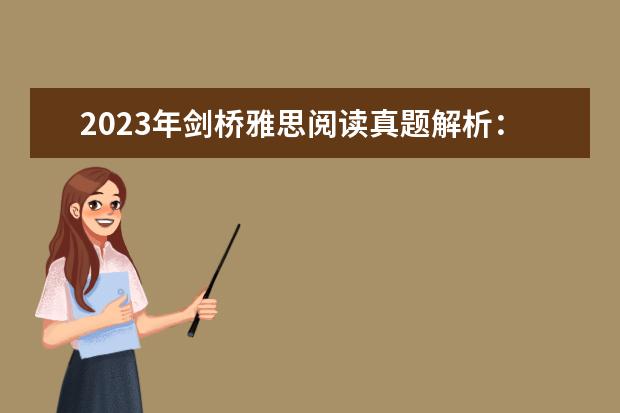
2023年剑桥雅思阅读真题解析:Thomas Young
您好,我是专注留学考试规划和留学咨询的小钟老师。在追寻留学梦想的路上,选择合适的学校和专业,准备相关考试,都可能让人感到迷茫和困扰。作为一名有经验的留学顾问,我在此为您提供全方位的专业咨询和指导。欢迎随时提问!
对于雅思考生来说,剑桥雅思阅读题难不难?下面就和小钟老师一起来看看2023年剑桥雅思阅读真题解析:Thomas Young。
Thomas Young
The Last True Know-It-All
A Thomas Young (1773-1829) contributed 63 articles to the Encyclopedia Britannica, including 46 biographical entries (mostly on scientists and classicists) and substantial essays on "Bridge,” "Chromatics," "Egypt," "Languages" and "Tides". Was someone who could write authoritatively about so many subjects a polymath, a genius or a dilettante? In an ambitious new biography, Andrew Robinson argues that Young is a good contender for the epitaph "the last man who knew everything." Young has competition, however: The phrase, which Robinson takes for his title, also serves as the subtitle of two other recent biographies: Leonard Warren's 1998 life of paleontologist Joseph Leidy (1823-1891) and Paula Findlen's 2023 book on Athanasius Kircher (1602-1680), another polymath.
B Young, of course, did more than write encyclopedia entries. He presented his first paper to the Royal Society of London at the age of 20 and was elected a Fellow a week after his 21st birthday. In the paper, Young explained the process of accommodation in the human eye on how the eye focuses properly on objects at varying distances. Young hypothesized that this was achieved by changes in the shape of the lens. Young also theorized that light traveled in waves and he believed that, to account for the ability to see in color, there must be three receptors in the eye corresponding to the three "principal colors" to which the retina could respond: red, green, violet. All these hypothesis were subsequently proved to be correct.
C Later in his life, when he was in his forties, Young was instrumental in cracking the code that unlocked the unknown script on the Rosetta Stone, a tablet that was "found" in Egypt by the Napoleonic army in 1799. The stone contains text in three alphabets: Greek, something unrecognizable and Egyptian hieroglyphs. The unrecognizable script is now known as demotic and, as Young deduced, is related directly to hieroglyphic. His initial work on this appeared in his Britannica entry on Egypt. In another entry, he coined the term Indo-European to describe the family of languages spoken throughout most of Europe and northern India. These are the landmark achievements of a man who was a child prodigy and who, unlike many remarkable children, did not disappear into oblivion as an *.
D Born in 1773 in Somerset in England, Young lived from an early age with his maternal grandfather, eventually leaving to attend boarding school. He haddevoured books from the age of two, and through his own initiative he excelled at Latin, Greek, mathematics and natural philosophy. After leaving school, he was greatly encouraged by his mother's uncle, Richard Brockle*y, a physician and Fellow of the Royal Society. Following Brockle*y's lead, Young decided to pursue a career in medicine. He studied in London, following the medical circuit, and then moved on to more formal education in Edinburgh, Gottingen and Cambridge. After completing his medical training at the University of Cambridge in 1808, Young set up practice as a physician in London. He soon became a Fellow of the Royal College of Physicians and a few years later was appointed physician at St. George's Hospital.
E Young's skill as a physician, however, did not equal his skill as a scholar of natural philosophy or linguistics. Earlier, in 1801, he had been appointed to a professorship of natural philosophy at the Royal Institution, where he delivered as many as 60 lectures in a year. These were published in two volumes in 1807. In 1804 Young had become secretary to the Royal Society, a post he would hold until his death. His opinions were sought on civic and national matters, such as the introduction of gas lighting to London and methods of ship construction. From 1819 he was superintendent of the Nautical Almanac and secretary to the Board of Longitude. From 1824 to 1829 he was physician to and inspector of calculations for the Palladian Insurance Company. Between 1816 and 1825 he contributed his many and various entries to the Encyclopedia Britannica, and throughout his career he authored numerous books, essays and papers.
F Young is a perfect subject for a biography - perfect, but daunting. Few men contributed so much to so many technical fields. Robinson's aim is to introduce non-scientists to Young's work and life. He succeeds, providing clear expositions of the technical material (especially that on optics and Egyptian hieroglyphs). Some readers of this book will, like Robinson, find Young's accomplishments impressive; others will see him as some historians have - as a dilettante. Yet despite the rich material presented in this book, readers will not end up knowing Young personally. We catch glimpses of a playful Young, doodling Greek and Latin phrases in his notes on medical lectures and translating the verses that a young lady had written on the walls of a summerhouse into Greek elegiacs. Young was introduced into elite society, attended the theatre and learned to dance and play the flute. In addition, he was an accomplished horseman. However, his personal life looks pale next to his vibrant career and studies.
G Young married Eliza Maxwell in 1804, and according to Robinson, "their marriage was a happy one and she appreciated his work." Almost all we know about her is that she sustained her hu*and through some rancorous disputes about optics and that she worried about money when his medical career was slow to take off. Very little evidence survives about the complexities of Young's relationships with his mother and father. Robinson does not credit them, or anyone else, with shaping Young's extraordinary mind. Despite the lack of details concerning Young's relationships, however, anyone interested in what it means to be a genius should read this book.
Questions 1-7
Do the following statements agree with the information given in Reading Passage 1?
In boxes 1-6 on your answer sheet, write
TRUE if the statement is true
FALSE if the statement is false
NOT GIVEN if the information is not given in the passage
1 “The last man who knew everything” has also been claimed to other people.
2 All Young’s articles were published in Encyclopedia Britannica.
3 Like others, Young wasn't so brilliant when grew up.
4 Young's talents as a doctor are surpassing his other skills.
5 Young's advice was sought by people responsible for local and national issues.
6 Young was interested in various social pastimes.
7 Young suffered from a disease in his later years.
Questions 8-13
Answer the questions below.
Choose NO MORE THAN THREE WORDS AND/OR A NUMBER from the passage for each answer.
8 How many life stories did Young write for Encyclopedia Britannica?
9 What aspect of scientific research did Young do in his first academic paper?
10 What name did Young introduce to refer to a group of languages?
11 Who inspired Young to start the medical studies?
12 Where did Young get a teaching position?
13 What contribution did Young make to London?
文章题目:
Thomas Young—The Last True Know-it All
托马斯·杨——最后一个无所不知的人
篇章结构
体裁人物传记
题目托马斯·杨——最后一个无所不知的人
结构A段:托马斯·杨对百科全书的主要成就
B段:托马斯年轻时的主要成就
C段:托马斯晚年的主要成就
D段:托马斯童年的生活背景及成长经历
E段:托马斯作为自然哲学学者取得的成就
F段: 托马斯在其他领域的成就
G段:托马斯的感情生活
试题分析
Question 1-7
题目类型:True / false /not given
题号定位词文中对应点题目解析
1Other peopleA段第四句“Young has competition, however: The phrase, which Robinson takes for his title, also serves as the subtitle of two other recent biographies: Leonard Warren's 1998 life of paleontologist Joseph Leidy (1823-1891) and Paula Findlen's 2023 book on Athanasius Kircher (1602-1680), another polymath.”该句中明确给出了Young还有其他的竞争者,他们的传记中也同样拥有这样的小标题,分别是Leonard Warren写的关于Joseph Leidy的传记,以及 Paula Findlen's写的关于Athanasius Kircher的传记。
因此,本题答案为True
2all, articlesB段第一、二句B段第一句 “Young, of course, did more than write encyclopedia entries.”明确表示Young所做的远不仅仅是编辑大英百科全书的词条,因此并不是所有的都在百科全书。而在本段第二句中,作者指出,Young在20岁的时候将自己的第一篇论文自荐给伦敦皇家学会,并在一年后成为该学会的会员: He presented his first paper to the Royal Society of London at the age of 20 and was elected a Fellow a week after his 21st birthday。Paper与article为近意思。显然,题干与原文含义相反。
因此,本题答案为False
3likeC段最后一句C段整体是在介绍Young晚年的主要成就,即Young长大后的成就。此外,在C段最后一句中,作者明确指出Young和其他的孩子不同的一点在于,Young并没有像其他那些年少成名而后来江郎才尽的孩子一样,他后来同样取得了非凡的成就: These are the landmark achievements of a man who was a child prodigy and who, unlike many remarkable children, did not disappear into oblivion as an *.句中的unlike为like的反义词,显然题干与原文含义相反。
因此,本题答案为False
4surpassingD段第四、七句D段介绍了Young的成长背景和经历,同时体现出其涉猎范围较为广泛。其中第四句中提到Young决定学医,并且在后面的介绍中指出Young还参加戏剧演出,学习跳舞和吹笛子: He then broke with his Quaker upbringing by attending the theater and learning to dance and play the flute. In addition, he was an accomplished horseman.而在第七句中作者指出Young还是一名杰出的马术师。但是并未指出Young在哪个方面的造诣更高,更有天赋。Surpassing这个概念并没有在文中体现。
因此,本题答案为Not Given
5soughtE段第四句“ His opinions were sought on civic and national matters”,文中表明Young的很多观点关注人民和国家事务。题干与原文含义相同。
因此,本题答案为True
6Interested in, social pastimeF段第七句“We catch glimpses of a playful Young, doodling Greek and Latin phrases in his notes on medical lectures and translating the verses that a young lady had written on the walls of a summerhouse into Greek elegiacs.”文中指出,通过Young的医学演讲中乱写的希腊字母和拉丁短语以及将一位年轻女性写在凉亭上的诗歌翻译成希腊挽歌便能看出他的幽默。显然,Young对于这样的社交娱乐是感兴趣的。题干和原文相符合。
因此,本题答案为True
7disease, later yearsC段第一句,G段第一句C段第一句给出了“later in his life,”但是本段近讲述了Young晚年在学术方面的成就;G段给出了Young的婚后生活,以及Robinson在书中并未提及Young与父母间的关系。但无论哪一个点都没有提及其晚年饱受某种疾病之苦。
因此,本题答案为Not Given
题目类型:Short-answer question
8life storiesA段第一句“Thomas Young (1773-1829) contributed 63 articles to the Encyclopedia Britannica, including 46 biographical entries (mostly on scientists and classicists)…”该剧中的“biographical entries”指传记词条,与题干中的life stories表示相同涵义。
因此,本题答案为46
9first academic paperB段第三句“In the paper, on how the eye focuses properly on objects at varying distances, Young hypothesized that deformation of the crystalline lens accomplished the accommodation.”B段段首表明,Young将自己的第一篇论文自荐给了伦敦皇家学会学会。因此本段讨论的是其第一篇论文。而本段第三句指出,在这篇论文中,Young主要讨论了人类眼球的调节机制
因此,本题答案为humaneye或human eye accommodation
10a group of languagesC段第五句“In another entry, he coined the term Indo-European to describe the family of languages spoken throughout most of Europe and northern India.”该句指出,Young创造了术语 Indo-European来描述在欧洲大部分地区以及北印度使用的语言。
因此,本题答案为Indo-European
11inspire, medical studiesD段第四句D段前面介绍了Young童年时期的生活背景。本段第四句中则指出:“Following Brockle*y's lead, Young decided to pursue a career in medicine.”。显然,正是因为 Richard Brockle*y的引导,Young才决定在医学方面有所建树。
因此,本题答案为 Richard Brockle*y
12teaching positionE段第二句“ Earlier, in 1801, he had been appointed to a professorship of natural philosophy at the Royal Institution”,题干中的teaching position与E段第二句中的professorship均表示“教师职位”,该句明确指出,Young作为自然哲学的教授,受聘于英国科学研究所。
因此,本题答案为 Royal Institution
13LondonE段第五句“His opinions were sought on civic and national matters, such as the introduction of gas lighting to London and methods of ship construction.”E段主要介绍了Young作为自然哲学学者取得的成就。而第五句则列举了Young的两个成就,其对于伦敦的所做出的成就在于煤气照明的引入。
因此,本题答案为gas lighting
A我们该怎样理解托马斯·杨(1773-1829)?他是《大不列颠百科全书》中63篇文章的作者,其中包括46篇传记(大部分都是关于科学家和古典学者),和大量关于“桥” “色彩论” “埃及” “语吉” “潮汐”等的论文。一个能够写出这样多有权威性文章的人应该算是一个博学者? 一个天才?还是一个业余兴趣广泛的人呢?在一篇关于他的比较激进的传记中,Andrew Robinson 认为托马斯杨是-位强有力的竞争者能够配得这样的墓志铭“是最后一个知道任何事的人”。但是杨也要面对竞争:因为这样的传记标题Robinson不仅给了他,也作为副标题给了有关另两位学者的传记:Lenard Warren 1998年著的《古生物学家Joseph Leipy的一生》(1823-1891)以及Paula Findlen 2023年著的关于另一位博学者Athanasius Kircher(1602-1680)的传记。
B当然杨的贡献远不止写了很多百科全书上的文章,他在20岁的时候将自己的第一篇论文自荐给伦敦皇家学会,并在他的21岁生日后被评为一周科学人物,杨在该篇论文中解释了人类眼睛的调节机制一一关于眼睛如何通过不同的距离聚焦在物体上。在后面的文章中,他更加全面地探讨了这个问题,类似牛顿,他在自己身上进行了可怕的实验用以获得相关的证据,他还得出这样的理论:光是通过“以太”分子的振动,以波的形式进行传递的,而“以太”是一种假想物质,其存在还存在争议性。他还认为为了能看见颜色,必须要有3个感应器对“三原色”进行感应,而这三种视网膜对其产生感应的颜色就是红,黄,蓝二种颜色。
C在他人生的晚些时候,也就是40多岁的时候,杨试图破解锁在罗塞塔石碑里的未知文字密码,这个石碑是在1799年在埃及被拿破仑的军队发现的,并且从1802年起就在英国博物馆进行展出。该石碑上包含了 3种不同的字母:希腊语,不可辨识的文字以及埃及的象形文字。这种不可辨识的文字现在被认为是正如杨所推断的是很普通的,是和象形文字直接相关的。他最初有关这方面的工作首次出现在他在《大不列颠百科全书》中编纂的词条。在另一个条目中,他创造了术语“Indo-European”来描述在欧洲大部分地区以及北印度使用的语言。这些都是这是这位从小就展露科学天赋并且不像很多孩子后来江郎才尽的科学家获得的里程碑式的成就。
D托马斯·杨出生在英国萨默塞特郡一个虔诚的教友会教徒家庭,从小和他的外公一起长大,最后去了寄宿学校。他两岁的时候就博览群书,并且自学熟练掌握了拉丁语,希腊语,数学以及哲学,在很大程度上他受到了舅舅Richard Brockle*y的鼓励,他的舅舅也是英国皇家学会的一位内科医生。在Brockle*y的引导下,杨决定要在医学方而有所建树,他曾先后在伦敦大学、爱丁堡大学和格丁根大学学习医学,多亏了Brockle*y的引荐,杨进入了英国皇家学会,他最后也打破了从小在教友会的教育,他参加戏剧演出,学习跳舞和吹笛子,此外,他还是一位杰出的马术师。在1808年结束在剑桥大学的医学学习后,杨在伦敦开了一家诊所,很快他就成为皇家内科医生学会的一员,并且几年后成为圣乔治医院的一名内科医生。
E杨作为内科医生的医术却赶不上他作为自然哲学学者或是语言学家取得的成就,早在1801年,他已经被任命为英国皇家学会的教授,他每年要在那里举办60场的讲座。这些讲座在1807年以两本书的形式进行出版。1804年杨就已经成为英国朵家学会的秘书,而他获此殊荣直至去世。他的很多观点关注人民和国家事务,比如说在伦敦引进煤气照明和造船方法。从1819年起,他就是航海天文年历的主要负责人,也是Board of Longitude的秘书。从1824年到1829年,他担任Palladian 保险公司的精算师和内科医生。在1816年和1825年间,他为《大不列颠百科全书》编纂了许多词条,而且穷其一生著作,论文无数。
F我们通过杨在医学课上胡乱写的希腊字母和拉丁文短语以及他将一位年轻的女士写在避暑山庄墙上的诗句翻译成挽歌可以看出他的幽默,但是他的个人生活也因为自己对工作和研究的全情投入而略显苍白。
G他在1804年和Eliza Maxwell结婚,据Robinson所述“他们的婚姻是幸福的,因为他的夫人欣赏他的工作”。我们对于他夫人的了解仅限于她在她丈夫备受一些关于眼睛的理论方面争议的时候总是坚定地支持他,并且当他的医学生涯开始慢慢起飞的时候,她开始有些担心钱的问题。值得一提的是,杨没有被保护的人,他都是和自己的导师进行互动一一先是他的外公,后是Brockle*y一一还有先于他过失的一些伟人(其中很多是很著名的如牛顿,杨最早在17岁读了他写的书)。但是关于杨和他母亲以及父亲的关系的记述却鲜力人知,Robinson在说到杨的非凡的头脑时也并没有将其归功于他的父母,或许很难有这样的巧合:过去的天才都是由于卓越的父母教育造就的。
希望以上的答复能对您的留学申请有所帮助。如果您有任何更详细的问题或需要进一步的协助,我强烈推荐您访问我们的留学官方网站
,在那里您可以找到更多专业的留学考试规划和留学资料以及*的咨询服务。祝您留学申请顺利!
2023年1月13日雅思阅读真题回忆解析
您好,我是专注留学考试规划和留学咨询的小钟老师。在追寻留学梦想的路上,选择合适的学校和专业,准备相关考试,都可能让人感到迷茫和困扰。作为一名有经验的留学顾问,我在此为您提供全方位的专业咨询和指导。欢迎随时提问!
雅思考试是重要的考试之一,那么雅思真题是怎么样呢?不少人对此比较感兴趣,和小钟老师一起来看看2023年1月13日雅思阅读真题回忆解析!欢迎阅读。
2023年1月13日雅思阅读真题回忆解析
此次考试,第一篇和第三篇难度较小,第二篇难度较大,比较耗时。
Passage 1
题目
石油
话题分类
社会科学
题型及对应数量
T/F/NG(判断题)7
Short Answer Questions(填空题)6
内容回忆
文章大意:城市扩张能源紧缺,需要寻找新能源替代传统能源,有人对此进行了研究,并投资建立了公司。
答案:
1-7)判断
1.城市扩张需要这种石油去取代传统能源True
2.提取这种石油成分的科学家对于生产这种能源没有兴趣。False
3.很多人声称提取出来的成分是可以用来治疗疾病的。NG
4.研究人是相信这种成分是可以作为燃料来使用的。TRUE
5.In the 1985s,装这种石油的容器比这种石油本身要贵。TRUE
6.FALSE
7.第一条管道的建立收到了工人的*。TRUE
8-13)问答
8.创建的公司叫什么名字。standard oil
9.oil refiners
10.一个人从亚洲运回的除了油还有什么东西。sugar
11.运输用的红的桶使用什么材料制成的。Welsh tin
12.为什么做慈善,因为得了 关节炎
13.在什么领域进行了投资:Medical research
参考阅读
Passage 2
题目
Yawning打哈欠
话题分类
人文科学
题型及数量
段落信息匹配5
细节信息匹配 4
Summary(填空题)4
内容回忆
文章大意:对于打哈欠的研究
答案回忆:
14-18)Matching
14.C imagining leads to yawning
15.D occupation and inclination to yawning
16.A overview of research
17.B body temperature and yawning
18.B disapprove of a theory
19-22) Matching
有三个学校进行了研究,将三个学校跟四个研究成果进行配对
19.B not difference in gender
20.C mental disorder
21.A the way we breathe
22.B trained yawn more than the untrained
23-26)Summary
23.bond
24.danger
25.rest
26.acommunicationsystem
文章:
AWhen a scientist began to study yawning in the 1980s, it was difficult to convince some of his research students of the merits of“yawning science.”Although it may appear quirky (诡异) his decision to study yawning was a logical extension to human beings ofmy research in developmental neuroscience, reported in such papers as“Wing-flapping during Development and Evolution.” As a neurobehavioral problem, there is not much difference betweenthe wing-flapping of birds and the face- and body-flapping of human yawners.
BYawning is an ancient, primitive act. Humans do it even before they are born, opening wide in the womb (*) . Some snakes unhinge their jaws to do it. One species of penguins yawns as part of mating. Only now are researchers beginning to understand why weyawn, when we yawn and why we yawn back. A professor of cognitive neuroscience at Drexel University in Philadelphia, Steven Platek, studies the act of contagious yawning, something done only by people and other primates.
CIn his first experiment, he used a psychological test to rank people on their empathic (感情嵌入的) feelings. He found that participants who did not score high on compassion did not yawn back.“We literally had people saying,‘Why am I looking at people yawning?” Professor Platek said. “It just had no effect.”
DFor his second experiment, he put 10 students in an magnetic resonance imaging machine as they watched video tapes of people yawning. When the students watched the videos, the part of the brain which reacted was the part scientists believe controls empathy–the posterior cingulate (皮层的) , in the brain’s middle rear.”I don’t know if it’s necessarily that nice people yawn more, but 1 think it’s a good indicator of a state of mind,”said Professor Platek.“It’s also a good indicator if you’re empathizing with me and paying attention.”
EHis third experiment is studying yawning in those with brain disorders, such as auti* and schizophrenia, in which victims have difficulty connecting emotionally with others. A psychology professor at the University of Maryland, Robert Provine, is one of the few other researchers into yawning. He found the basic yawn lasts about six seconds and they come in bouts with an interval of about 68 seconds. Men and women yawn or half-yawn equally often, but men are significantly less likely to cover their mouths which may indicate complex distinction in genders.”A watched yawner never yawns,,”Professor Provine said. However, the physical root of yawning remains a mystery. Some researchers say it’s coordinated within the hypothalamus (下丘脑) of the brain, the area that also controls breathing.
FYawning and stretching also share properties and may be performed together as parts of a global motor complex. But they do not always co-occur—people usually yawn when we stretch, but we don’t always stretch when we yawn, especially before bedtime. Studie*y J. I. P , G. H. A. Visser and H. F. Prechtl in the early 1980s, charting movement in the developing fetus using ultrasound, observed not just yawning but a link between yawning and stretching as early as the end of the first prenatal trimester (预产期).
GThe most extraordinary demonstration of the yawn-stretch linkage occurs in many people paralyzed on one side of their body because of brain damage caused by a stroke. The prominent British neurologist Sir Francis Walshe noted in 1923 that when these hemiplegics yawn, they are startled and mystified to observe that their otherwise paralyzed arm rises and flexes automatically in what neurologists term an“associated response.” Yawning apparently activates. undamaged, unconsciously controlled connections between the brain and the cord motor system innervating the paralyzed (瘫痪的) limb. It is not known whether the associated response is a positive prognosis for recovery, nor whether yawning is therapeutic for reinnervation(再生) or prevention of muscular atrophy.
HClinical neurology offers other surprises. Some patients with“locked-in” syndrome, who are almost totally deprived of the ability to move voluntarily, can yawn normally. The neural circuits for spontaneous yawning must exist in the brain stem near other respiratory and vasomotor centers, because yawning is performed by anencephalic(无脑畸形) who possess only the medulla oblongata (脊髓延髓). The multiplicity of stimuli of contagious yawning, by contrast, implicates many higher brain regions.
参考阅读
Passage 3
题目
Cinematographer新西兰电影
话题分类
人文科学
题型及数量
Y/N/NG(判断题)4
Multiple Choices(选择题)5
Summary(填空题)5
内容回忆
文章大意:介绍了新西兰的电影业,一开始文章提到了大家不了解电影摄影师的重要性也不了解摄影师和导演之间的关系。文章介绍了一名摄影师,这个摄影师在艺术和技术方面都很优秀,与优秀的女演员合作,两个人创造了很多经典的银幕形象。文章介绍了新西兰电影的发展以及对其的一些评价。
答案回忆:
27-30)判断题
27.cinematographer作用是帮助观众把关注点放在导演希望他们注意的点上。YES
28.cinematographer和director关系差NG
29.电影摄影师需要艺术和技术方面的能力。YES
30.两个人(一个摄影师一个女演员)工作时关系差。NG
31-36)选择题
31.文章讲新西兰电影是为想要说明什么:说明新西兰早期电影比较简单,跟其他国家比,较差。
32.讲的一部新西兰电影(两个单词开头都是B)这个电影跟新西兰其他电影相比取得了突破,比较成功。
33.还是说这部新西兰电影,说摄影师用了什么拍摄手法:用比较个人的风格展示了一个国家,城市和人民
34.讲问一个导演的第二部电影,(摄影师换了,换成了新人,手法比较写实,跟上一部不一样),选的是这部电影有unique version.
35.讲的还是这个导演第三部电影,问作者觉得他这部电影不好在哪里:故事线过于松散story line(loose).
36-40) Summary(选词填空)
36.文章讲了70年代电影关注countryside,选项rural areas
37.文章讲难度在environment, 选项:weather
38.讲解决问题的:rental company
39.还有一个问题是通过解决,文章说management,选项是:good leadership
40.最后一个是新西兰电影从业者与世界其他地方比的优势:文章说大家一起合作。选项是greater equality
以上是小编精心整理的2023年1月13日雅思真题回忆解析,谢谢浏览。
希望以上的答复能对您的留学申请有所帮助。如果您有任何更详细的问题或需要进一步的协助,我强烈推荐您访问我们的留学官方网站
,在那里您可以找到更多专业的留学考试规划和留学资料以及*的咨询服务。祝您留学申请顺利!
请问2023年1月20日雅思阅读真题回忆解析
您好,我是专注留学考试规划和留学咨询的小钟老师。选择留学是人生重要的决策之一,而作为您的指导,我非常高兴能为您提供最准确的留学解答和规划。无论您的问题是关于考试准备、专业选择、申请流程还是学校信息,我都在这里为您解答。更多留学资讯和学校招生介绍,欢迎随时访问。
1月20日考试快结束了,很多人想知道这次考试的真题是怎么样呢?想必是不少出国人士比较关心的问题,和小钟老师一起来看看2023年1月20日雅思阅读真题回忆解析!欢迎阅读。
2023年1月20日雅思阅读真题回忆解析
此次三篇阅读难度中等。其中第一篇阅读判断题有些绕,可能会耗费一些时间,
第二篇和第三篇阅读基本没什么难度太大的题。
Passage 1
题目The mystery of the arctic
话题分类自然科学
题型及对应T/F/NG(判断题) 7
数量Short Answer Questions(填空题) 6
内容回忆文章主旨:
1.介绍了 Franklin expedition 背景, for the shorter passage from
Canada to Asia but never return。
2.后来 tones of expedition 出发去寻找 Franklin expedition 残骸和
船员的死因 but failed
3.后来直到现在,在 Inuit 的帮助下,某科学家发现了这个船。
4.首次发现这个船的科学家们第一次总结出那些经验丰富的
船员们未能在这次出行中幸存的原因是他们铅中毒
5.专家继续分析为什么是导致中毒的罪魁祸首是罐装食品,但
是 B 专家认为这个残骸还有其他的解释
6.但是 B 专家站出来说每年人们会消耗大量的罐装食品也没见
中毒。
7.后面他分析了可能是由于船员们的饮水管收到污染导致的,
因为这个提供人们煮食物的水也用来为发动机提供能用的
水,在这个过程中管道可能受到污染。
8.某 F 专家提出一个理论,对于人们认为的真正的原因,也可
能会受到人们最早的互相口头想搞的解释,因为人们习惯了
说故事并且说服别人相信。
9.专家 B 希望他的对这次你事故原因的研究能对此地区有利且
希望人们能够在他发现真正原因前保护好这些残骸。
答案:
1.many unsuccessful expedition attempts to find out the Franklin
expedition. T
2.it is the first time experts 某某 worked with Inuit scientist
reaching this Franklin expedition. NOT GIVEN
3.B 专家 support the earlier finding. F
4.b believe people background affects the reasons for this wreck. F
5.outside Inuit’s people doubt the first explanation. T
6.b 专家 unwilling to share his research 在其他人找到这个
Franklin 遗迹前。 T
填空题:8-13
在极低的 unusual 8. Magnet 的影响导致勘探无法使用指南针只
可以用 9.sonar 定位方向
Three theory
10. tined contaminated food 导致了船员的死亡。
11. water need for 12.engines 导致了这次事故
Inuit’s people are used to telling 13.stories.
参考阅读
Passage 2
题目The importance of law
话题分类社会科学
题型及数量判断题 3
段落信息匹配题 6
填空题 4
内容回忆文章主旨:
1.背景铺垫。我们的生活各个方面都离不开法律
2.人类社会进步,人们开始懂得使用文字,越来越影响法律
3.律师职业的重要性,把搞 it 的技术人才和律师做了比较。打
了个比方,其他职位的人就像是一场赌局里的玩家,而律师
这样的职业却是指定一个赌局规则的人,再次说明法律的重
要性
4.在英国每年有很多人不待见律师这样的身份,他们不能像护
士、it 技工给人们生活提供实质性的服务。且举例嘲讽律师
的卑微身份。一个小孩在介绍自己家长时,说自己的老爸是
个大明星让他很自豪,但他的老爸还有个身份就是个小律
师。
5.作者总结了下很多看不起律师这样身份的人的观点:律师是
和霉运有关的,and they are droved financially, for them money
is above truth. 但话锋一转,说其实很多律师做的也只是起草
文件的活,和打官司纠纷根本不沾边。律师应该得到像护士、
it 技工这样的职业应有的尊重。
答案:
段落信息匹配题:
17. 人们对法律的影响。 2
18. 律师得到应有的尊重 7
19. 法律的普遍运用 1
20 英国颁布的法律在不断增加修改 4
21 律师的职业道德重要性的举例 3
填空题:
21 人们认为金钱在truth之上
22 律师应得到和nurse 一样的尊重
23 因为律师也对自己的投入很多dedication
24 有些律师只是在起草文件和drafts的活
Passage 3
题目Remember this-good memory
话题分类人文科学
题型及数量填空题 5
判断题 5
选择题 4
内容回忆文章主旨:
1. 背景介绍了2个极端的人。49岁的AJ女士记忆力超级好,而89岁的高龄老头EP却只记得最近发生的事情。
2. &3. AJ女士的超级好记忆和其他人不太一样,他不是记忆数据或者事实,记忆的东西都很生活化,举例比如杂货店到日常天气等等儿童时期的事情也都记得特别清楚,科学家为此记忆类型还用术语来定义。
4. EP老头记忆力变差的原因术语病毒感染导致的
5. &6&7. 分析了下科学家对此记忆的研究,人们大脑就是一个大的信息存储器,有个某某部件控制着
8. 作者无病*了一番人们也没必要羡慕这样的记忆力,我们每天收到的信息我们需要的毕竟只是重要的部分。只是可以书写下来,信息也可以通过互联网取得。
9. 几个反问句反问读者,让人们烦死记忆力到底好还是不好。
填空题:
27. D. numbers
28.H. precedent
29. C.emotion
30. B. infection
31. E time
判断题
32. AJ女士和EP老头是记忆力的极端 T
33. AJ女士记忆的东西和数字有关 F
34-36. FTT
选择题:
37. the main topic of the eight graph is that. B 人们只需要记忆重要信息
38.-40. the reason why human beings memory failed to work
B
39-40. BC
以上是小编整理的2023年1月20日雅思考试真题,谢谢浏览。
以上信息希望能帮助您在留学申请的道路上少走弯路。如果您还有更多问题或需要深入探讨,不要犹豫,您可以在我们的留学官方网站上找到更丰富的考试资讯、留学指导和*专家咨询服务。我们的团队始终站在您的角度,为您的留学梦想全力以赴。祝您申请顺利!
以上就是2023年剑桥雅思阅读真题解析:Thomas Young(2023年1月13日雅思阅读真题回忆解析)全部内容,更多相关信息,敬请关注雅思无忧。
雅思培训
免责声明:文章内容来自网络,如有侵权请及时联系删除。


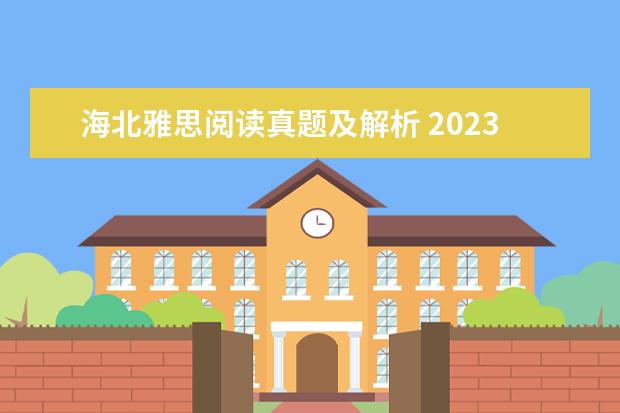 海北雅思阅读真题及解析 2023年剑桥雅思阅读真题解析:Thomas Young 2023年1月13日雅思阅读真题回忆解析
海北雅思阅读真题及解析 2023年剑桥雅思阅读真题解析:Thomas Young 2023年1月13日雅思阅读真题回忆解析
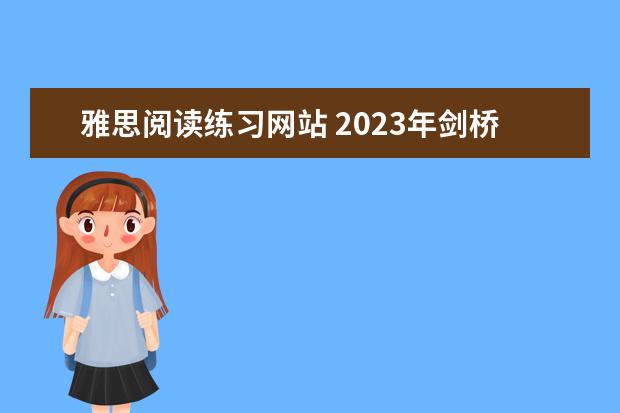 雅思阅读练习网站 2023年剑桥雅思阅读真题解析:Thomas Young
雅思阅读练习网站 2023年剑桥雅思阅读真题解析:Thomas Young
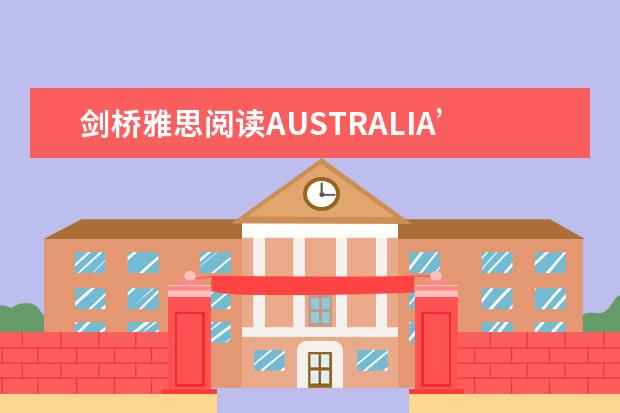 剑桥雅思阅读AUSTRALIA’SSPORTINGSUCCESS及答案解析 剑桥雅思阅读 2023年剑桥雅思阅读真题解析:Thomas Young
剑桥雅思阅读AUSTRALIA’SSPORTINGSUCCESS及答案解析 剑桥雅思阅读 2023年剑桥雅思阅读真题解析:Thomas Young
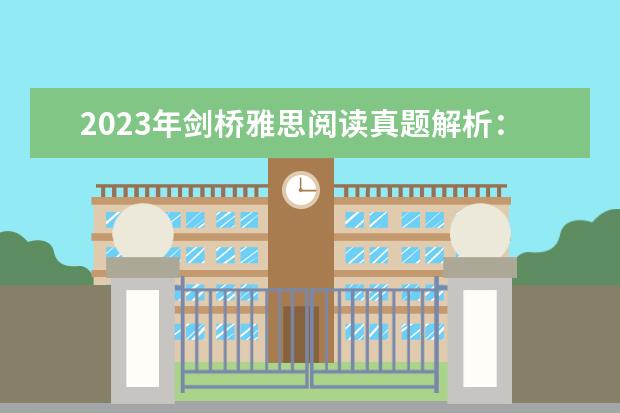 2023年剑桥雅思阅读真题解析:Thomas Young 剑桥雅思10 test3 阅读 答案 西双版纳雅思阅读真题及解析
2023年剑桥雅思阅读真题解析:Thomas Young 剑桥雅思10 test3 阅读 答案 西双版纳雅思阅读真题及解析
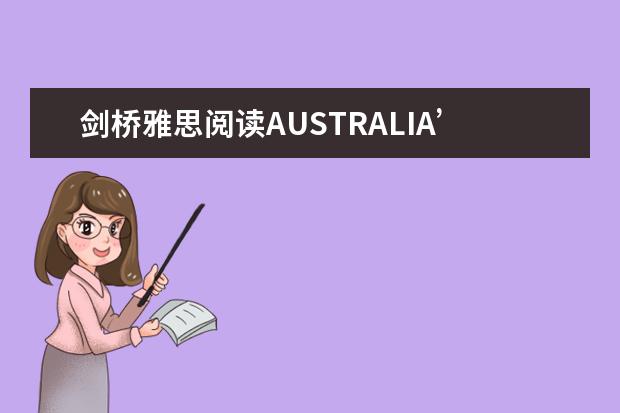 剑桥雅思阅读AUSTRALIA’SSPORTINGSUCCESS及答案解析(2023年剑桥雅思阅读真题解析:Thomas Young)
剑桥雅思阅读AUSTRALIA’SSPORTINGSUCCESS及答案解析(2023年剑桥雅思阅读真题解析:Thomas Young)
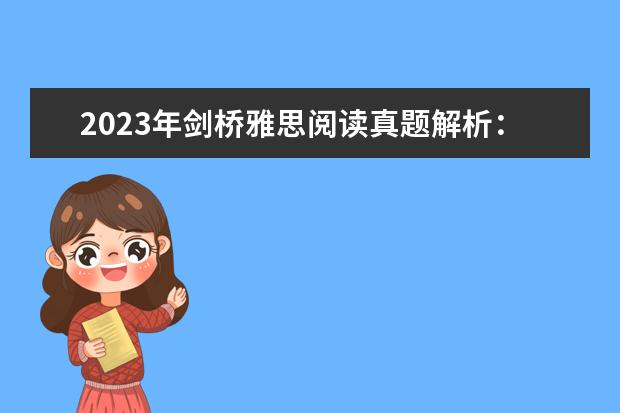 2023年剑桥雅思阅读真题解析:Thomas Young(求剑桥雅思7 test2 阅读第1、 6、33、37、39 详解)
2023年剑桥雅思阅读真题解析:Thomas Young(求剑桥雅思7 test2 阅读第1、 6、33、37、39 详解)
 2023年剑桥雅思阅读真题解析:Thomas Young 剑桥雅思10 test3 阅读 答案 剑桥雅思阅读AUSTRALIA’SSPORTINGSUCCESS
2023年剑桥雅思阅读真题解析:Thomas Young 剑桥雅思10 test3 阅读 答案 剑桥雅思阅读AUSTRALIA’SSPORTINGSUCCESS
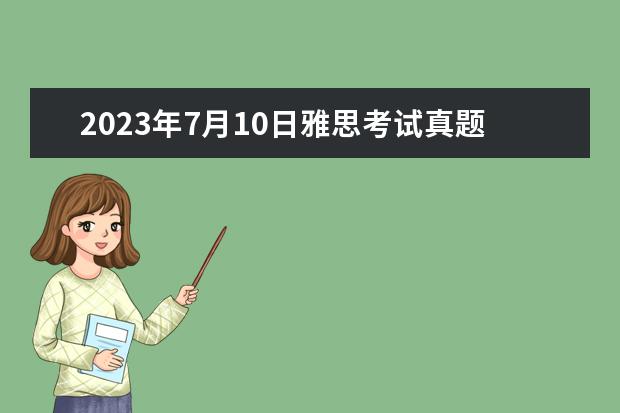 2023年7月10日雅思考试真题答案(2023年剑桥雅思阅读真题解析:Thomas Young)
2023年7月10日雅思考试真题答案(2023年剑桥雅思阅读真题解析:Thomas Young)
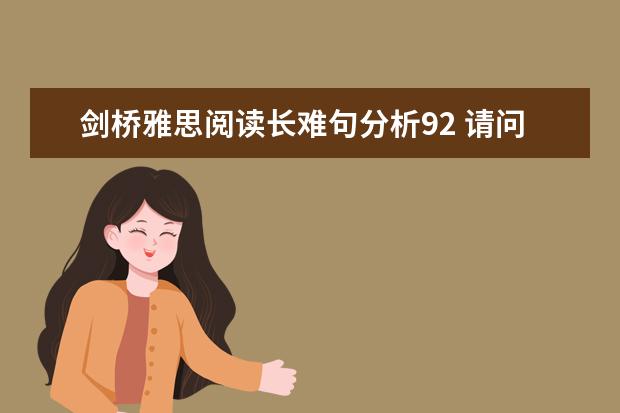 剑桥雅思阅读长难句分析92 请问2023年剑桥雅思阅读真题解析:Thomas Young 请问2023年5月20日雅思阅读考试真题及答案解析
剑桥雅思阅读长难句分析92 请问2023年剑桥雅思阅读真题解析:Thomas Young 请问2023年5月20日雅思阅读考试真题及答案解析
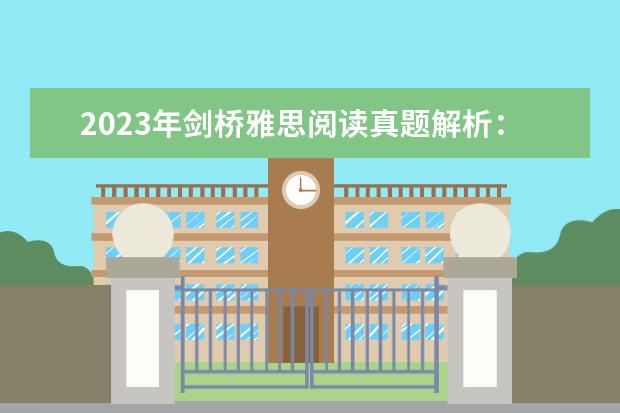 2023年剑桥雅思阅读真题解析:Thomas Young 雅思阅读段落细节题特点解析 剑桥雅思考试全真试题集9的全面解析
2023年剑桥雅思阅读真题解析:Thomas Young 雅思阅读段落细节题特点解析 剑桥雅思考试全真试题集9的全面解析